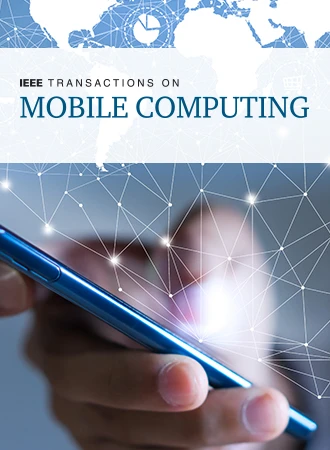ReflexGest: Recognizing Hand Gestures Under VLC-Capable Lamps
IF 7.7
2区 计算机科学
Q1 COMPUTER SCIENCE, INFORMATION SYSTEMS
引用次数: 0
Abstract
As a main approach towards touch-free human-computer interaction,ReflexGest:在vlc功能灯下识别手势
手势识别(hand gesture recognition, HGR)作为实现人机交互的主要途径,一直是学术界和工业界的研究热点。与此同时,可见光通信(VLC)越来越受欢迎,市场上有现成的商用产品(例如飞利浦灯)。这些事实引发了我们的疑问:我们能否利用VLC ready灯通过同时进行HGR和VLC来实现集成传感和通信(ISAC) ?为此,我们提出ReflexGest作为我们对这个问题的答案。为了实用,ReflexGest在台灯上实现;这款vlc ready灯配备了一个环形发光二极管(LED)阵列和一个光电二极管(PD,用于光强感应),最初用于上行/下行链路的vlc。要求在灯和桌子表面之间执行手势,ReflexGest利用反射的变化及其与相应手势的独特相关性来实现HGR。特别是,ReflexGest首先通过增强LED灯来处理PD有限的传感能力,从而使发光模式多样化。此外,ReflexGest通过对抗性学习技术来对抗来自不同桌面的反射干扰,仅提取与手势相关的特征。我们的广泛评估表明,ReflexGest能够在实际VLC流量下提供准确的HGR。
本文章由计算机程序翻译,如有差异,请以英文原文为准。
求助全文
约1分钟内获得全文
求助全文
来源期刊
CiteScore
12.90
自引率
2.50%
发文量
403
审稿时长
6.6 months
期刊介绍:
IEEE Transactions on Mobile Computing addresses key technical issues related to various aspects of mobile computing. This includes (a) architectures, (b) support services, (c) algorithm/protocol design and analysis, (d) mobile environments, (e) mobile communication systems, (f) applications, and (g) emerging technologies. Topics of interest span a wide range, covering aspects like mobile networks and hosts, mobility management, multimedia, operating system support, power management, online and mobile environments, security, scalability, reliability, and emerging technologies such as wearable computers, body area networks, and wireless sensor networks. The journal serves as a comprehensive platform for advancements in mobile computing research.

 求助内容:
求助内容: 应助结果提醒方式:
应助结果提醒方式:


